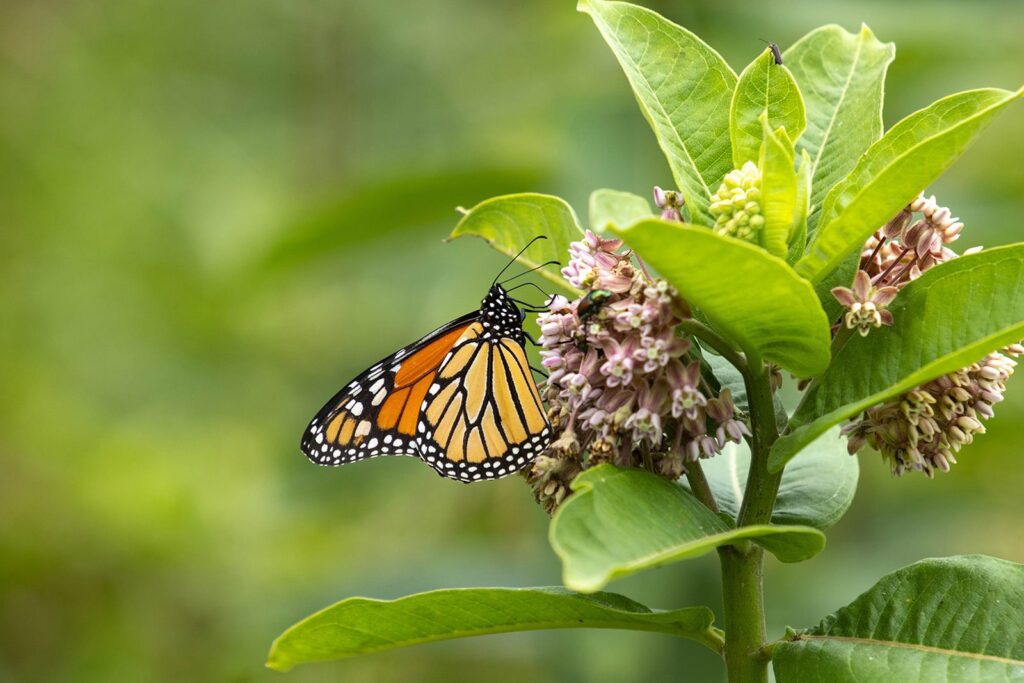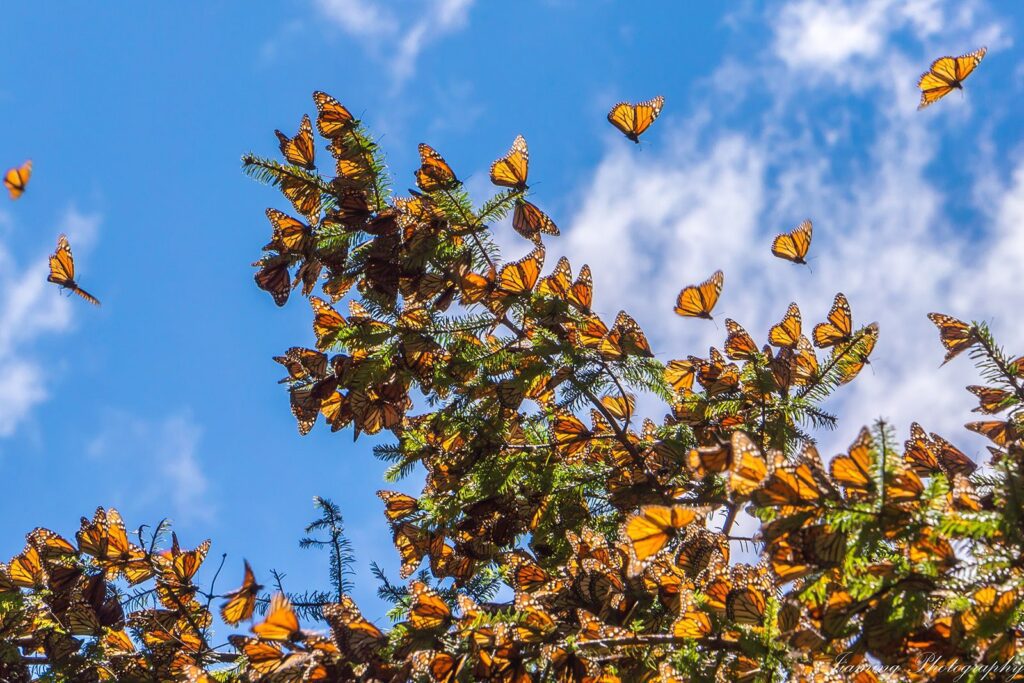Every year, the western monarch butterflies migrate to California’s coastal forested groves to spend the winter. The butterflies collect in clusters on eucalyptus trees and Monterey pines all along the Coast, creating a beautiful display for visitors. Then when the weather warms in spring, the monarchs fly away to lay their eggs and drink flower nectar in Arizona, California, Nevada, Oregon, Washington, Idaho, and Utah. The Western Monarch Trail includes 57 miles along the historic Highway 1, and Cambria is the perfect place to stop and see the annual migration.
When & Where to See Western Monarchs in Cambria
October—February
Monarchs arrive in Cambria in the fall and stay for winter. Find them in the trees while exploring trails in and around town.
March—September
Monarchs spread out across the western states to enjoy the warm weather of spring and summer.
To see monarchs in Cambria during the peak season, take a stroll along the Moonstone Beach Boardwalk up to Leffingwell Landing or head into Fiscalini Ranch, where the Ridge Trail, the Forest Loop, and the Meander Trail all offer opportunities for monarch viewing.

The History of the Western Monarch Trail
The Western Monarch Trail is the path that western monarch butterflies migrate each year. Historically, it reached from British Columbia to Baja California and east to the Rocky Mountains. It has slowly stopped reaching that far north due to climate change, habitat loss, and population decrease. But, after decades of decline, the Central Coast has seen a significant increase in butterfly populations in recent years!
While the migration is annual, it actually involves multiple generations of butterflies. The first three generations slowly migrate north, finding nectar and laying eggs. The fourth generation, called the Super Generation, returns all the way back to California for the winter. Even though they have never been to the Coast, they amazingly return to the same overwintering sites.
Scientists are still discovering how monarchs consistently migrate to the same locations. Most likely it’s a combination of genetics and directional aids like the earth’s magnetic pull and the position of the sun.
Native Plants and Monarch Butterflies
Like many insects, Monarch butterflies have specific plants that participate in their lifecycle. While traveling, Milkweed is a favorite nectar source for the butterflies. It is also the only host plant where they lay their eggs.
However, it is important to only plant milkweed in areas where it is a native plant. When planted in temperate areas where it stays alive all year, tropical milkweed can get a monarch butterfly protozoan parasite deposited on leaves by infected traveling monarchs. If the plant does not die back seasonally, the parasite will remain on the milkweed and inhabit the next generation of butterflies.
To support the monarchs in their migration, research which type of milkweed is native to your area and plant it in your garden. You can also plant other types of native flowers that are a good source of nectar.


Protecting Monarchs in Central California
We must all work together to protect the annual western monarch migration. To maintain established ecosystems, do not release non-native butterflies on the Western Monarch Trail. When approaching a cluster of resting butterflies, keep a respectful distance so they aren’t disturbed. Also, watch where you step! If you encounter a group of migrating monarchs, allow them to fly without interference while you admire the beautiful sight.
How to Help the Monarch Butterflies
To understand more about the western monarch migration, we need your help! Document your butterfly sighting by uploading pictures of monarchs and milkweeds to the Western Monarch Milkweed Mapper. You can also identify the type of milkweed in your area, submit additional data to help scientists with their research, and learn more about the annual migration.

